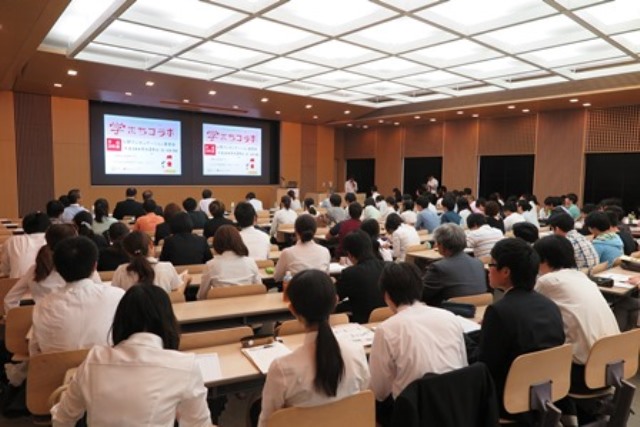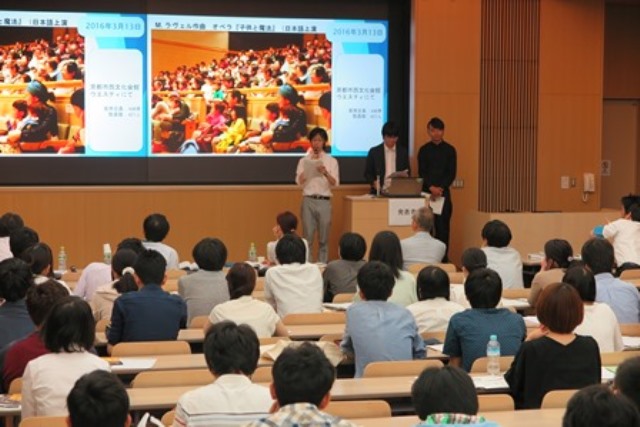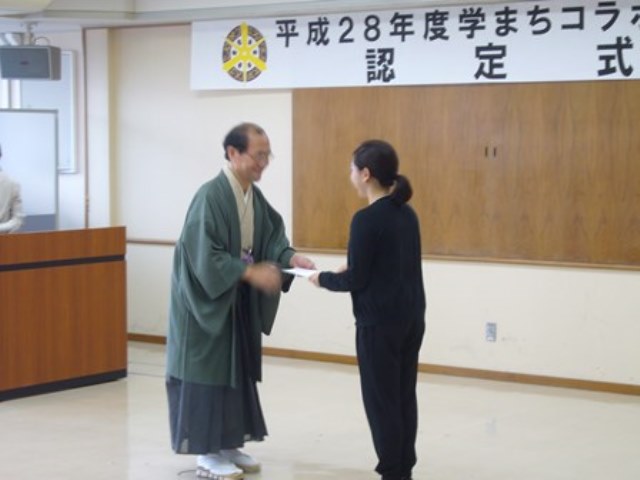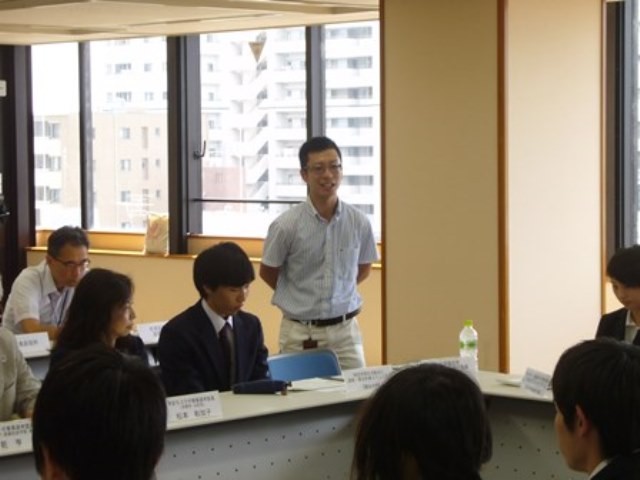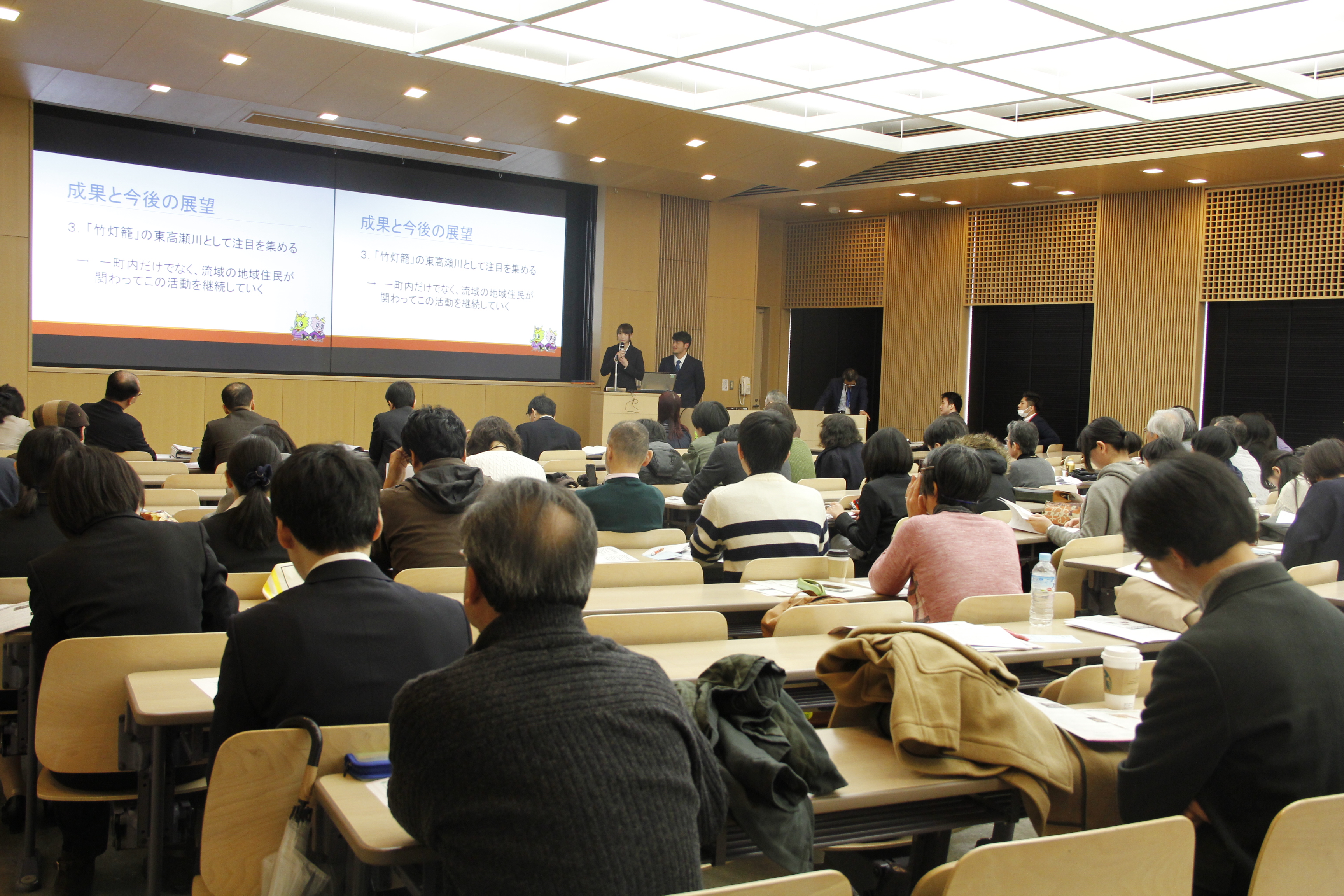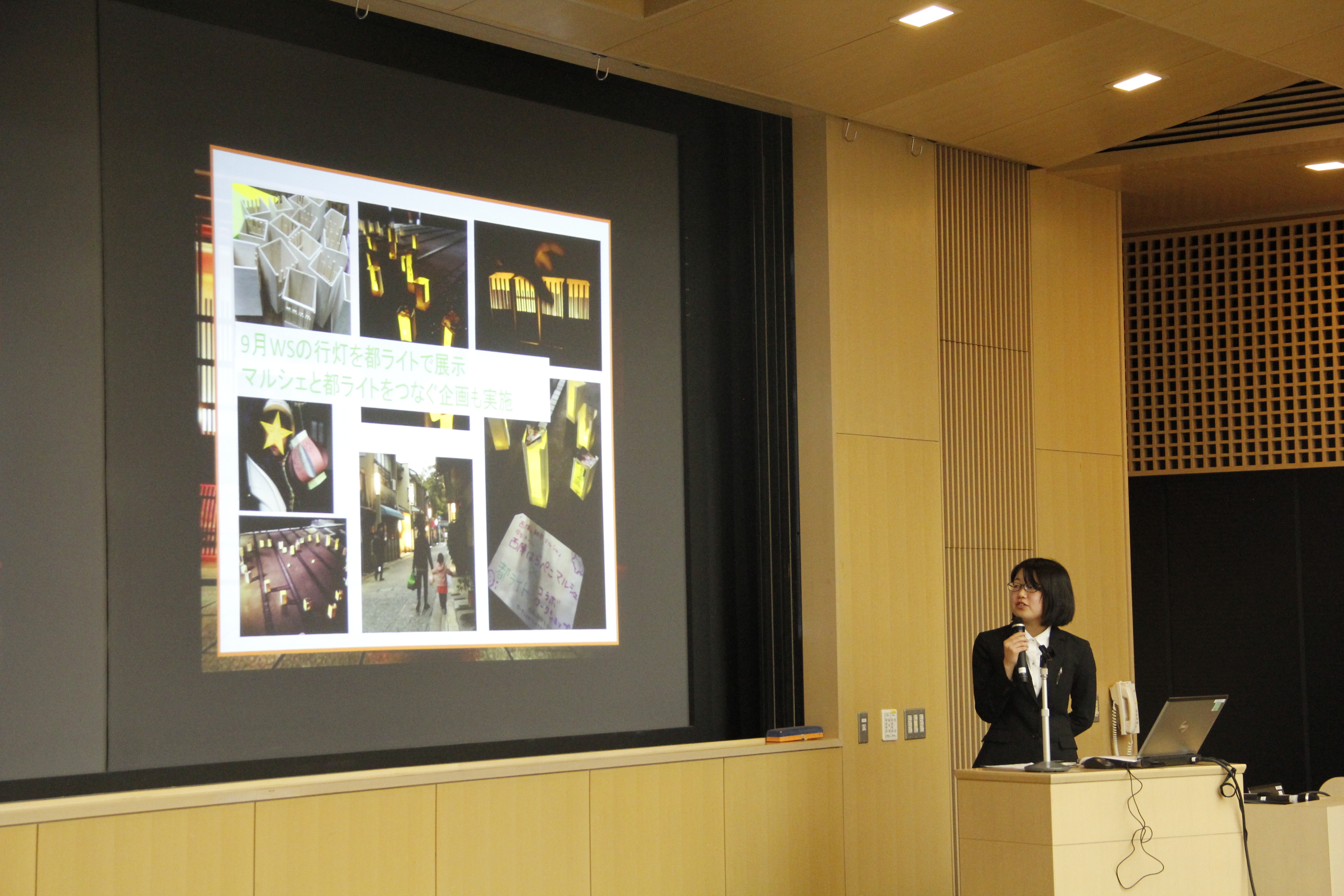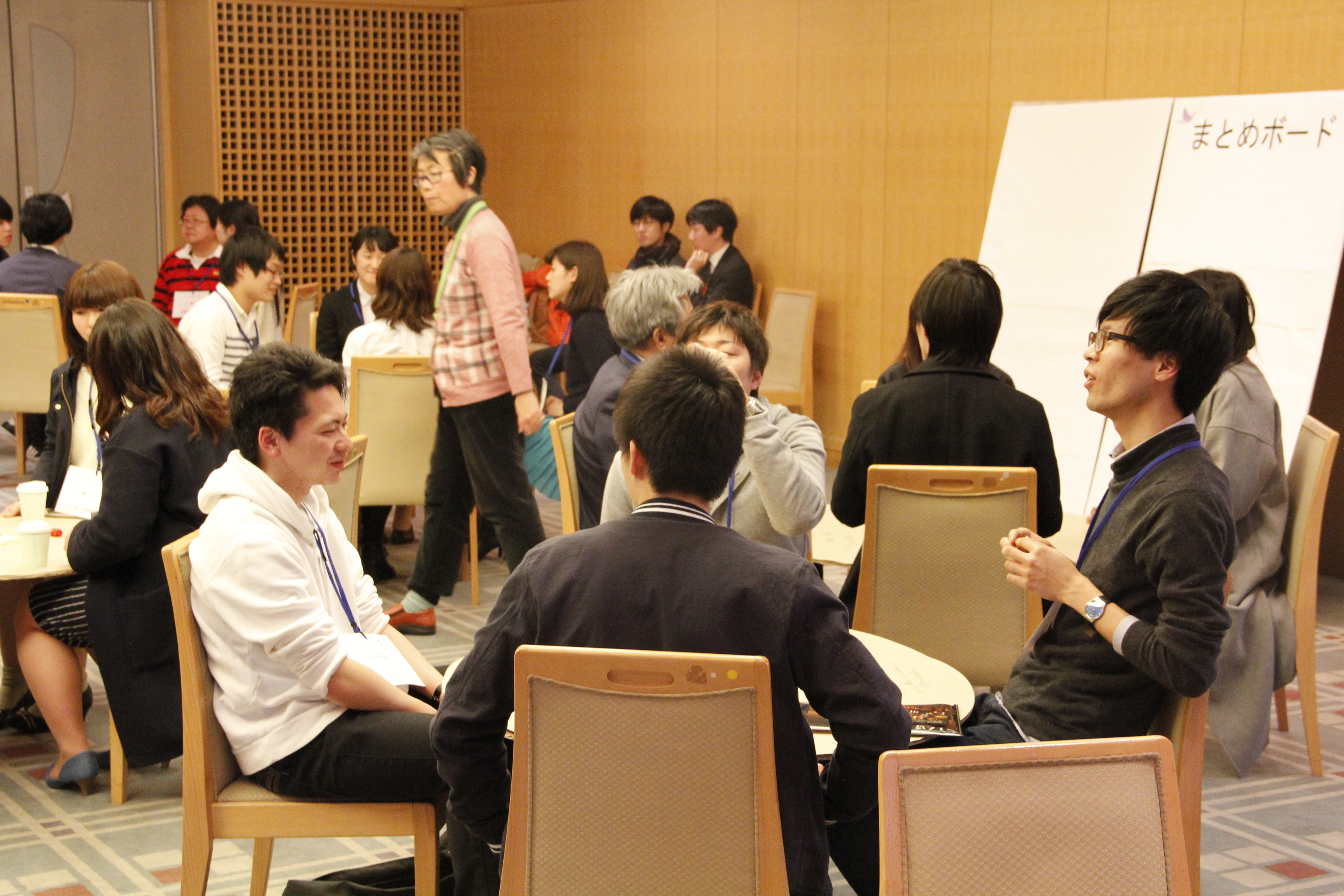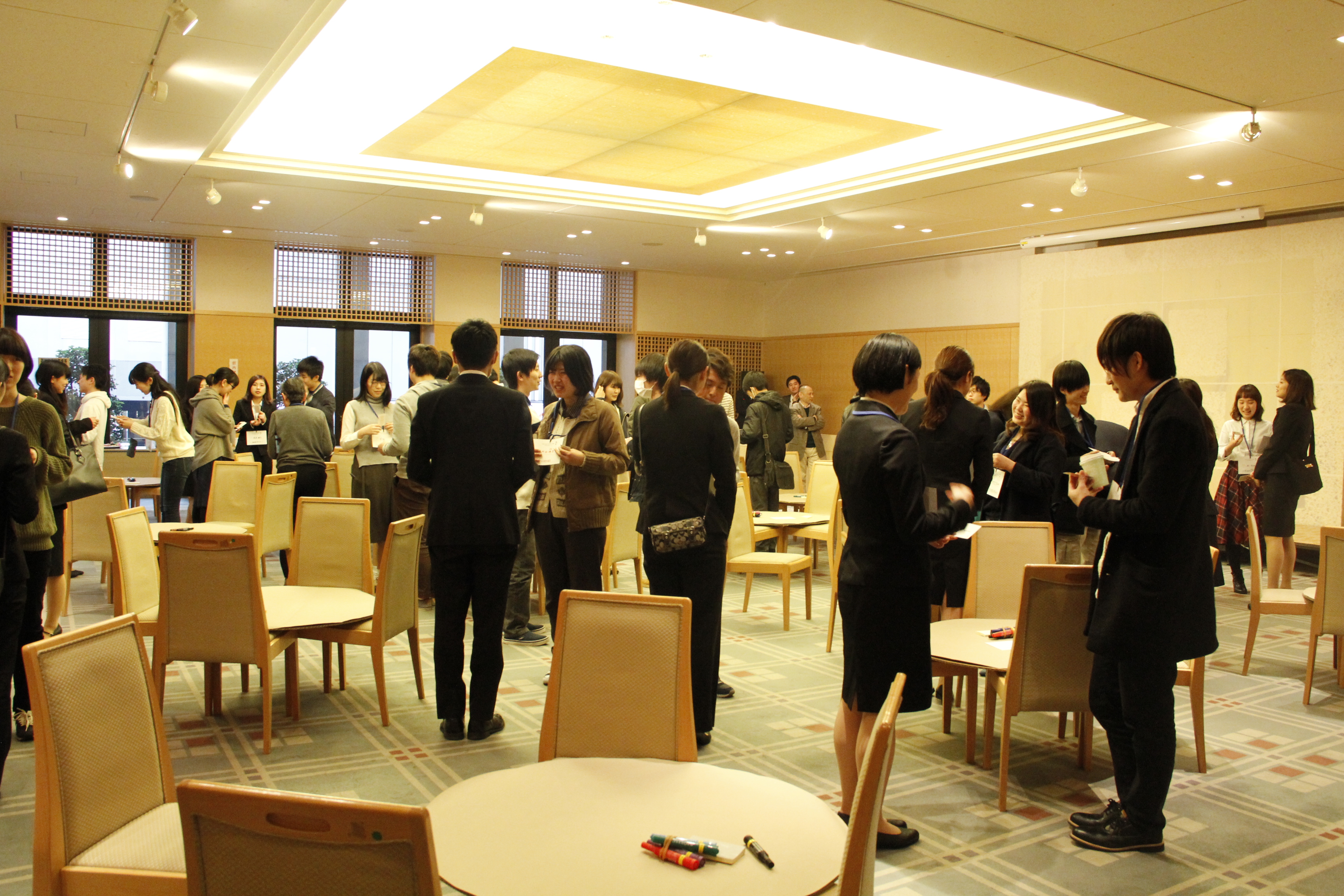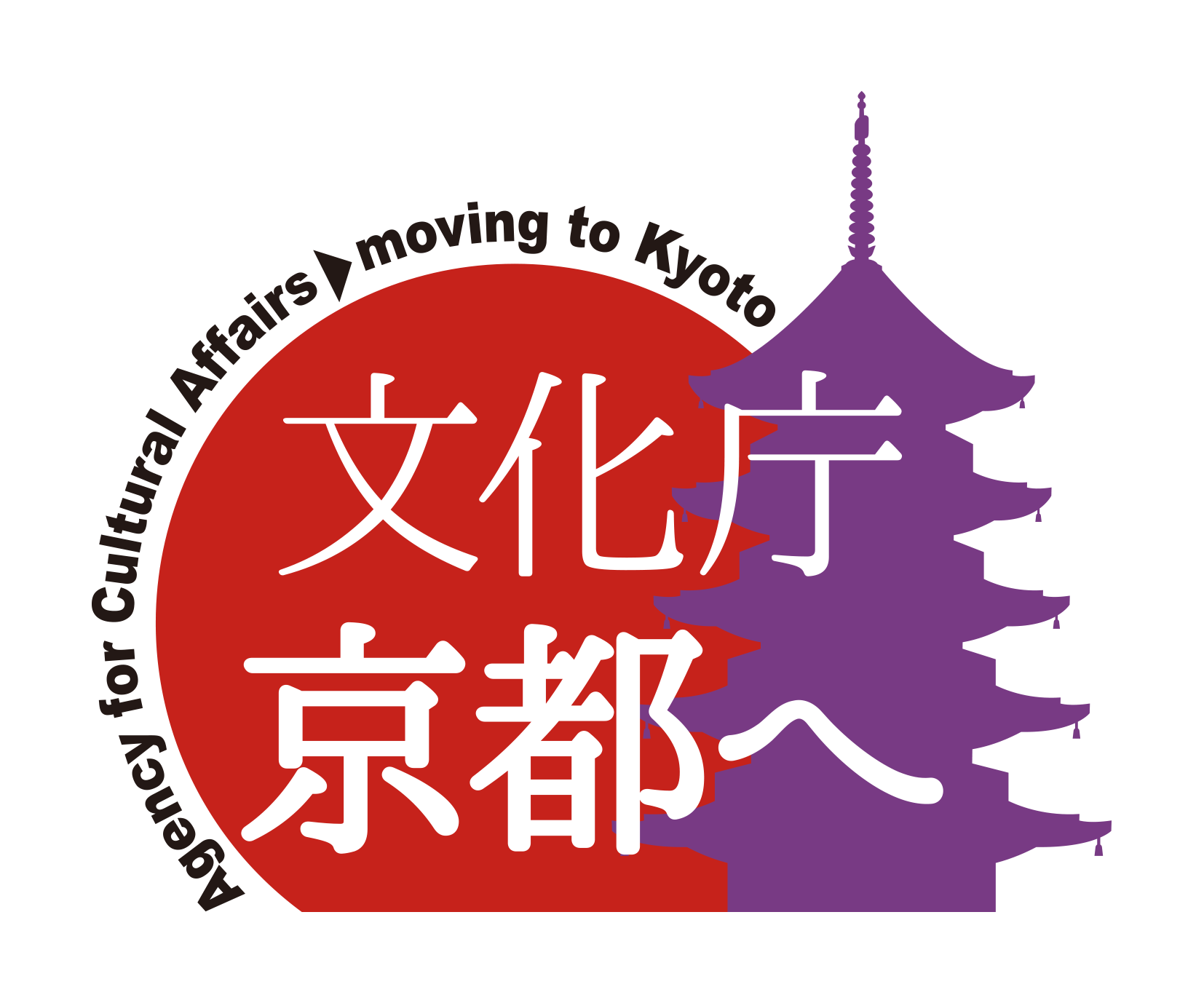The 2016 Activity Report data can be downloaded here.
Business Overview
In order to create attractive communities and solve local issues, we are looking for projects that universities and students are working on in collaboration with the local community, and we provide grants and support for outstanding initiatives. In this way, we will provide practical education and research opportunities, develop human resources, and for the local community, solve and revitalize local issues through the knowledge of the university and the vitality of students.
![]() Kyoto City Collaborative Project
Kyoto City Collaborative Project
Support amount: Up to 300,000 yen
Up to 300,000 yen will be provided to selected projects. In addition, at a debriefing session after the completion of the project, a certificate, a trophy, and an activity incentive of 100,000 yen will be paid to the implementing organization (one organization) that is recognized as the most excellent.
Main Schedule
Presentation: Sunday, March 27, 2016
Application period: April 1, 2016 (Friday) ~ May 13, 2016 (Friday)
1st screening: Friday, June 3, 2016 *Document screening
Second screening: Sunday, June 26, 2016 *Public presentation
Notification of results: Early July 2016
Approval ceremony: Thursday, July 14, 2016 *Certificates of certification will be issued to selected projects by Kyoto City.
Interim Report: Friday, October 28, 2016
Final Report: Friday, March 10, 2017 (for projects completed in February 2017, for projects completed in March 2017 on a different date) *Submission of documents
Report: Sunday, March 26, 2017
Heisei 28 “Gakumachi Collaboration Project” briefing session
- Date
- Sunday, March 27, 2016 14:55 – 15:10
- Venue
- Campus Plaza Kyoto, 5th Floor, Lecture Room 1
- Application
- [The reception for the 28th “Gakumachi Collaboration Project” briefing session has ended. ] 】
Application
Application Period
Friday, April 1, 2016 ~ Friday, May 13, 2016
* If you send it by mail, it must arrive on the same day, and if you bring it by 5 p.m.
<Click here to download documents related to FY2016 business recruitment>
● Application Guidelines (PDF link)
● Application form (Word link)
● Application form (sample form) (PDF link)
The application for the 28th “Gakumachi Collaboration Project” has ended.
Selection Results
1st Screening (Document Screening)
Organizations that passed the first screening: 21
Second Screening (Public Presentation Screening)
Sunday, June 26, 2016 10:00~16:00
Selected organizations (passed the second screening): 18 projects
【Supported Projects】18 Projects
| Application business name [support amount] |
Name of organization [Affiliated university name/Administrative district of operation] |
Business overview |
|---|---|---|
| Town and Park Planning | NPO Fukakusa Ryukoku Machiya Community [Ryukoku University/Fushimi Ward] |
The “Machiya Koen Project” was launched in 2015. It is a process of creating a community garden operated by the joint participation of “students and parents and children”. Starting this year, it has been integrated with the “Crafts Class” and has become a community garden where people can create things while also holding collaborative events with companies and local groups. Local parents and children have also changed from being mere participants to being involved, planning and proposing ideas together and playing a part in running the project as the main force behind change in the community. |
| Camo Cinema | Ritsumeikan University Camo Cinema Executive Committee [Ritsumeikan University/Kamigyo Ward] |
This will be the 12th time the event has been held, and the main goal of this project is to “develop cleaning activities centered on students and other young people.” In addition to cleaning activities, the project also aims to change people’s perception of cleaning activities by showing movies at night on the Kamo River, such as “rediscovering the wonder of nature” and “developing easy-to-participate cleaning activities by using the medium of movies.” |
| Environmental protection and Jizobon project in Fushimi Fukakusa and Higashi Takase River | Ryukoku University Higashi Takase River Environmental Protection and Jizobon Project Team [Ryukoku University Junior College Division/Fushimi Ward] |
Last year, we worked to preserve and revitalize traditional local events. We participated in two river cleanups and the traditional Jizobon festival, which was well received by local people. However, we have learned some things from our past experiences and would like to continue and upgrade our activities this year in order to get more generations involved and to delve deeper into environmental issues. |
| The Great Sound Team! ~Music Concert for 0-Year-Olds~ | Niconico Family Concert Executive Committee, a group of volunteers from Kyoto University of Arts [Kyoto City University of Arts/Shimogyo Ward] |
Based at Friendly House Nishi Hachijo and the adjacent Hachijo Kindergarten, we will hold concerts at various facilities. We will hold concerts that incorporate the opinions of local residents from last year, such as concerts for pregnant women and parents with disabled children, and as a new initiative, we plan to visit and perform at facilities for elderly people. We plan to hold a revival of our original musical “Snow White” in October and a family concert in March. |
| Mirai Art Seika Project | Seekasu [Kyoto Seika University/Sakyo Ward] |
The activities are centered on holding art workshops on-site, and are aimed at increasing opportunities for local children and elderly people to come into contact with art. Prior to implementation, meetings are held with each facility to hear about the users’ situations and needs, and then content is formulated and implemented. After implementation, a questionnaire survey is conducted on participants to hear their impressions, etc., and this information is used for the next event. Places visited include children’s centers and day care centers. |
| Keihoku Utsu Interaction and Learning | Kyoto Seika University Keihoku Utsu Treasure Hunt Association [Kyoto Seika University/Ukyo Ward] |
The Utsu region is blessed with rich nature, history and culture, but is also experiencing aging and depopulation, a problem that is evident in many local communities in Japan. This year, we will be holding four types of Seika workshops, a children’s festival, a summer festival, a torch festival, organizing materials from the old Utsu Elementary School, creating a walking map, and revising the area’s guide signs. The residents’ association and students will work together to respond to the needs of local residents, carry out activities that contribute to revitalization, and reconstruct new charms in Utsu. |
| A puppet theater for parents and children to enjoy | Kyoto Women’s University Puppet Theatre Tanpopo [Kyoto Women’s University/Higashiyama Ward] |
Currently, this activity is being carried out in Higashiyama Ward, utilizing the space of the infant club and mother club at a children’s center, where parents and children can enjoy watching and even performing puppet shows. By adopting the expressive activity of puppet shows, it is thought that participants can more actively generate interaction between parents, and that by entertaining their children, parents can more actively feel the joy of self-actualization. |
| Shirakawa Minna no Jizobon | Ochanoko-kai (Kyoto Kacho University, Kyoto Tachibana University, Ritsumeikan University, Hanazono University/Higashiyama Ward) |
In light of the current state of Jizobon in the region, where it is declining, we aim to establish a modern Jizobon that inherits the function and culture of local exchange, and to implement a Jizobon that goes beyond the boundaries of the region (town) by utilizing the Shirakawa environment, such as roadsides and water. We will implement programs that are attractive to children, young people (child-rearing generation), and the elderly, and encourage participation and interaction with other generations. In addition, prior to the implementation, we will hold a preparatory workshop to encourage local residents to participate as staff. |
| Higashiyama-style Jizobon Hell Paintings ~Making your work take root~ | Kyoto University of Art and Design Modern Industrial Heritage Art Regeneration Project “Makadori X” [Kyoto University of Art and Design/Higashiyama Ward] |
This marks the 12th year since we started working on community development, mainly in the Mutsuhara school district of Higashiyama Ward. We have been working to unearth overlooked local resources and bring new value back to the community through the lens of art. This year, we are going back to our roots and pursuing the possibility of industry (jobs) together with local residents, with the theme of “community-based” in order to further root these values in the community. |
| Toyoen ~Engawa Project Connecting to the Future~ | Toyoen ~Connecting People Engawa Project~ Executive Committee [Ryukoku University/Shimogyo Ward] |
The problem in the Toyozono school district is the low level of awareness of participation in local events among the younger generation. To address this issue, two projects will be launched. The first is a “nature experience class.” By creating a community of the parent generation through an overnight event, it will be possible to raise awareness of participation in local events. The other is a continuing project, the “Machinaka Vegetable Expo.” This will lead to the discovery of new leaders by having the parent generation, who have only participated until now, help with the operation of the event. |
| Shin-Omiya Shopping Street Soratane 2016 | Soratane Project [Ritsumeikan University, Bukkyo University, Kyoto Sangyo University/Kita Ward] |
The aim is for students who live and study in Kyoto to learn about the value of the area through interactions with the people in the shopping arcade and local children, and to create an opportunity for them to become more involved in local activities. Together with the shops and temples in the shopping arcade, we will hold music performances and hands-on classes where students can learn together with the children. Through these activities, we hope to increase the number of students and local residents who learn about the charms of the shopping arcade, which will also lead to the revitalization of the shopping arcade. |
| Kita Ward Connecting Radio Project | Ritsumeikan University, Faculty of Industrial and Social Sciences, Sakata Seminar [Ritsumeikan University/Kita-ku] |
In May 2016, a community FM station opened in Kita-ku, Kyoto City. We produced radio programs to promote the attractions of Kita-ku, and provided a space for interaction at the 1000KITA studio by displaying the programs and projectors that visualize them. We also produced programs and held walking workshops to discover and rediscover the attractions of Kita-ku, and by broadcasting these programs through radio, we aim to further enhance the appeal of Kita-ku as a region. |
| Kyoto Sanjo-kai Shopping Street Terakoya Project | Kyoto Koka Women’s University Koka Sanjo Girls [Kyoto Koka Women’s University/Nakagyo Ward] |
We plan and implement events to enliven the shopping arcade, and aim to further revitalize the Sanjo-kai shopping arcade by carrying out activities that will make it a place for children to play and learn, and a place for the local community. The target audience is families who visit the Sanjo-kai shopping arcade, and we, the students, also aim to deepen our ties with the local community through our project, and to create a mutually beneficial relationship in which the community will expand and become more active among the local community. |
| Keihoku Yuge Town Exchange Project | Keihoku Yuge Town Exchange Project Executive Committee [Kyoto University, Kyoto Women’s University/Ukyo Ward] |
This is a circle of university students in the city that is active in the former Keihoku town. Their activities include volunteering at the Satomachi Exchange Cafe “Koi Sakura,” which is open every Saturday, Sunday, and public holiday, where they interact with local residents and help with farm work and repairs in fallow fields. In the future, they plan to support the revival of the local summer festival by local high school students and hold exchange events for university students involved in the Keihoku area, leading to regional revitalization. |
| Nishijin Morning Market Support Project | Nishijin Harapeko Marche [Otani University, Kyoto Sangyo University/Kamigyo Ward] |
Nishijin Morning Market is a local event that has been held since 2012 as part of the town revitalization effort. Following the merger of the elementary schools in the four school districts of Seiitsu, Nishijin, Momozono, and Juraku in Kamigyo Ward, local residents formed an organization called the Nishijin Town Revitalization Association, which is the central organization that holds the event four times a year. This project aims to create a system that makes it easy for people of all ages to visit, while still respecting the function of the market as a place of relaxation for the local community, and also to promote the event. |
| Community and University Coexistence Project | Kyoto College of Economics – Community and University Coexistence Project [Kyoto College of Economics/Nishikyo Ward] |
Students from the Takahashi and Miyake seminars at Kyoto College of Economics will work with NPOs and neighborhood associations in Rakusai New Town to identify local issues and seek clues to solving them. Through planning and participating in local events such as “creating a place for the elderly” and “building connections” between people, as well as conducting research, the goal is not to simply provide labor or have fun, but to develop a sense of ownership through a shared awareness between students and local people through continuous participation. |
| Kyoto Bunkyo University Bus Tours | Kyoto Bunkyo University Bus Tours [Kyoto Bunkyo University/Fushimi Ward] |
This is a low-cost one-day bus tour planned and implemented by students for elderly people living alone in Mukojima New Town. The tour uses a school bus to depart and return to Mukojima New Town, and elderly people who tend to stay indoors go on tours accompanied by university students. It started as a project subject “New Town Urban Development” in 2013, and in 2015 it was held a total of nine times as a local student project “Kyoto Bunkyo Bus Tours”, and local expectations are growing, with people asking “When will the next one be held?” |
| Gifts from the field | VegiRitsu [Ritsumeikan University/Kita Ward, Fushimi Ward] |
They host agricultural experiences and cooking classes, and sell smoothies made from non-standard or overproduced vegetables. They aim to simultaneously solve the problems faced by farmers, namely, “discarding agricultural produce due to non-standard or overproduced produce,” and the problems faced by students, namely, “a diet that tends to be unbalanced due to a lack of vegetables.” By connecting the fields and the kitchen, they hope to convey the value of agriculture and the importance of food to students, and create a new community between local farmers and students. |
Implementation Report
Heisei 28 Public Presentation Screening (2nd Screening)
In deciding on the selected projects, we held a public presentation screening (second screening) on Sunday, June 26, 2016 at Campus Plaza Kyoto as an opportunity to promote the effects and characteristics of the projects and the enthusiasm for the projects.
This year, 21 applicants who passed the document screening in the first round of screening participated in the presentation screening.
Each organization appealed their efforts with elaborate presentations, and fully demonstrated the results of their preparations.
In addition, a total of about 130 people, including representatives of the presentation organizations, attended the venue and listened to the students’ presentations on their rich ideas and initiatives in collaboration with the local community.
Heisei 28 Business Certification Ceremony
On Thursday, July 14, 2016, a certification ceremony was held at the Kyoto City Fire Department Headquarters Building in the presence of Mayor Kadokawa and members of the selection committee for the 18 projects adopted this year.
At the certification ceremony, the mayor presented certificates to the representatives of each project, and representatives of each certified organization expressed their determination to implement the projects.
After the certification ceremony, the selection committee members gave comments and advice to each of the selected organizations, and each organization made a strong start toward regional revitalization. Future activities are expected.
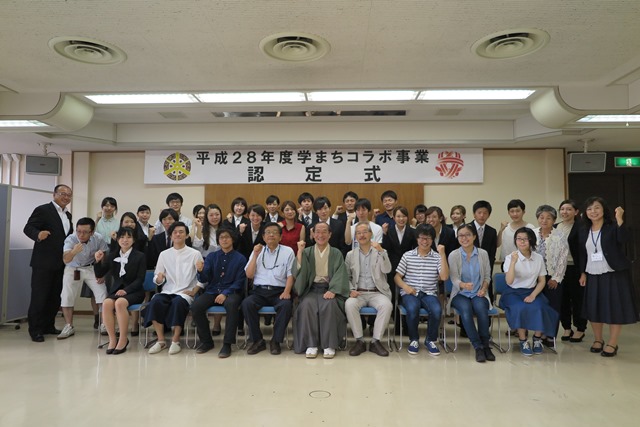
Heisei 28 debriefing session
On Sunday, March 26, 2017, a report meeting was held at Campus Plaza Kyoto. In addition, on the day of the event, a recruitment briefing session for the 29th fiscal year was held at the same time, and an opinion exchange meeting and exchange meeting were held with the participation of not only related parties but also visitors using the screening time.
≪ debriefing session≫
Of the 18 organizations selected this year, 17 (one group was absent) reported on their activities. Each group took advantage of the 8 minutes they had to present the results of their activities so far in their own presentations. The presentations gave each organization a very clear understanding of the various initiatives that have been carried out in the region so far. In the four-minute Q&A session after the presentation, it was seen that the judges responded sincerely to the questions.
≪Opinion exchange meetings and exchange meetings≫
Facilitated by Kyoto City Urban Development Advisors, after the debriefing session, an opinion exchange meeting and exchange meeting were held as a place to frankly discuss what was learned through the Gakumachi Collaboration Project. Approximately 60 participants, including not only those involved in the selected organizations but also those who came to listen to the presentations, were divided into groups of 4 or 5 and exchanged opinions while changing group members on themes such as what they learned and what they learned and specific episodes that led to learning, what they would like to do in the future in regional collaboration, and what they expect. In addition, in order to share what was said in these groups, we wrote down what impressed us on a sticky note at the end and posted it on the board, further deepening the exchange.
≪Award Ceremony and Commentary≫
Continuing from last year, this year’s awards were given to business organizations that have achieved excellent results. This year’s excellent organization was selected as the “Kyoto Seika University Keihoku Utsu Treasure Search Association”, which received the award in recognition of its understanding of the purpose and purpose of this project, its contribution to the community through its many years of activities, and its annual business improvement. In addition, other organizations that narrowly missed out on the award were also given generous applause and warm comments from the judges.
I hope that all of the organizations will continue their activities in the future, making use of the learnings and connections gained through their activities!
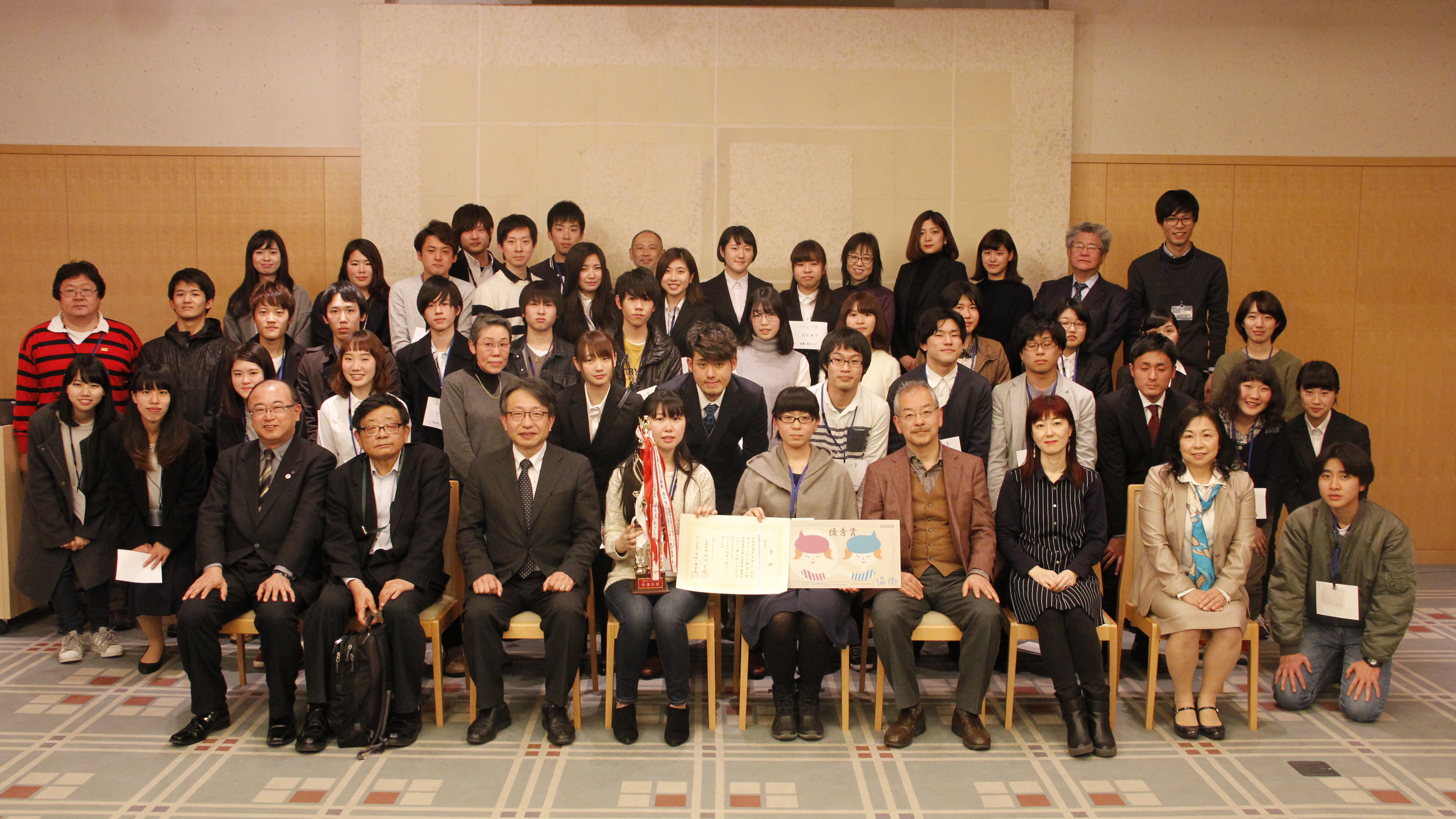
Where to submit application documents and contact information
University Consortium Kyoto Gakumachi Collaboration Project
TEL:075-353-9130 FAX:075-353-9101
MAIL:gakumachi-admin-ml■consortium.or.jp
(Please change ■ to @ and send)
〒600-8216 Shimogyo-ku, Kyoto-shi, Nishitoin-dori, Shiokoji, Shimo-ku, Kyoto, Campus Plaza Kyoto
* Reception hours: Tuesday ~ Saturday 9:00 ~ 17:00














